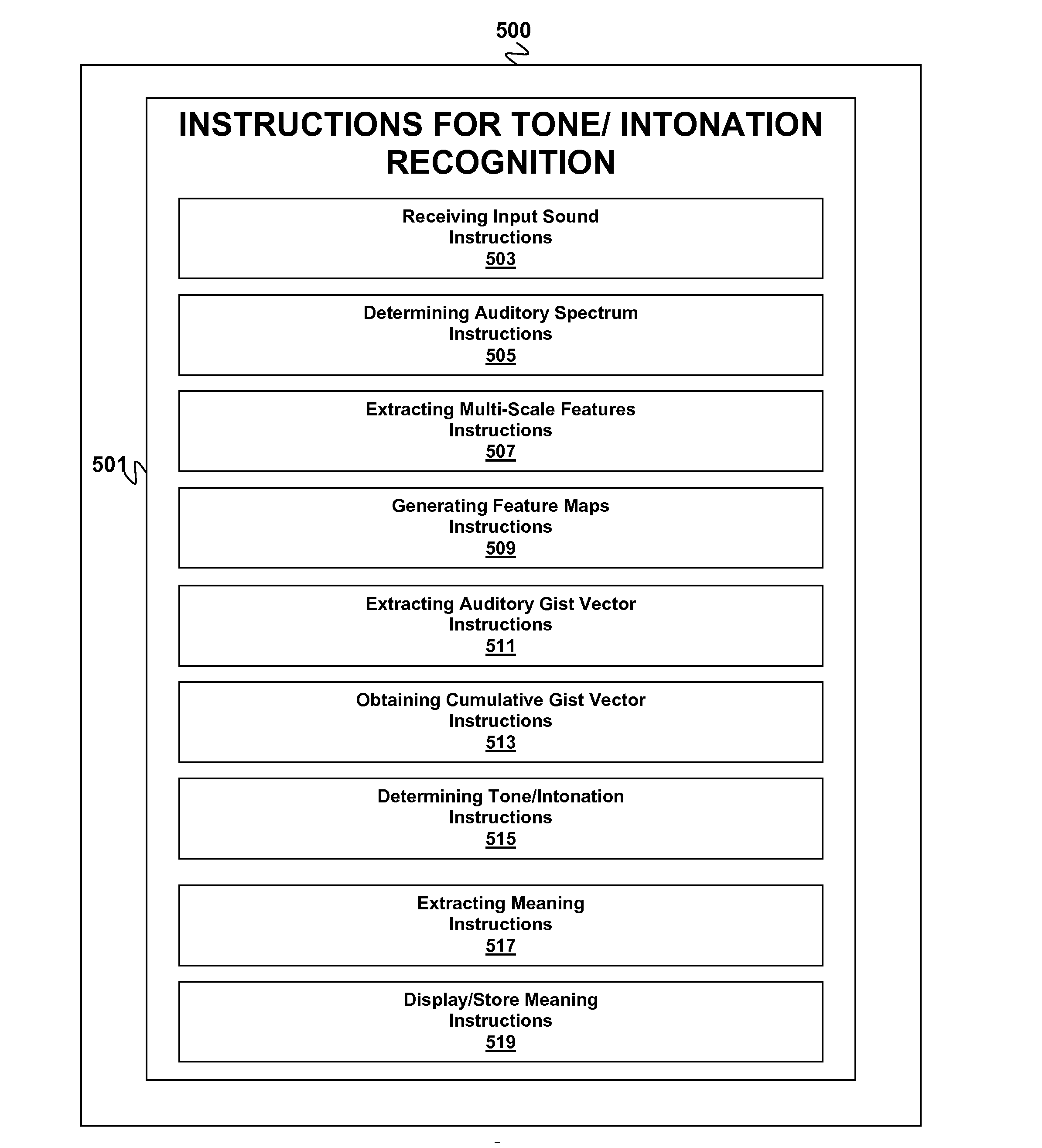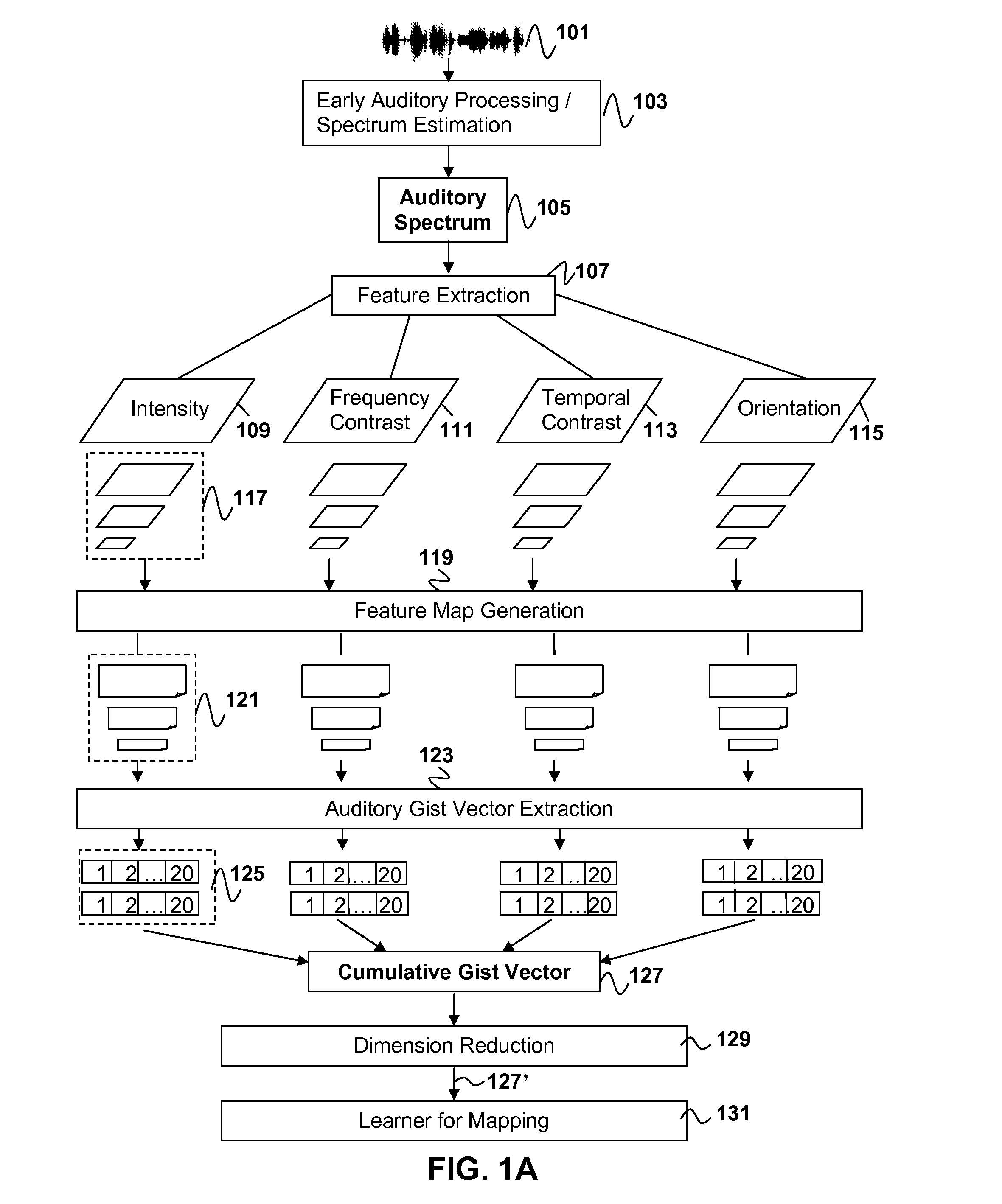Method for tone/intonation recognition using auditory attention cues
a technology of auditory attention and speech recognition, applied in speech recognition, speech analysis, instruments, etc., can solve problems such as inadequate tone recognition performance of methods
- Summary
- Abstract
- Description
- Claims
- Application Information
AI Technical Summary
Problems solved by technology
Method used
Image
Examples
Embodiment Construction
[0017]Embodiments of the present invention relate to spoken language processing methods and apparatus that use auditory attention cues for tone and intonation classification.
[0018]FIG. 1A is a flow diagram illustrating a method for tone / intonation recognition using auditory attention cues according to an embodiment of the present invention. The auditory attention model is biologically inspired and mimics the processing stages found in the human auditory system. It is designed to determine when and where sound signals attract human attention.
[0019]Initially an input window of sound 101 is received. By way of example, and not by way of limitation, this input window of sound 101 may be captured over a time window of some finite duration using a microphone which acts to convert the acoustic waves that characterize a particular input window of sound 101 into an electric signal for further processing. The input window of sound 101 may be any segment of a person's speech. By way of example...
PUM
 Login to View More
Login to View More Abstract
Description
Claims
Application Information
 Login to View More
Login to View More - R&D
- Intellectual Property
- Life Sciences
- Materials
- Tech Scout
- Unparalleled Data Quality
- Higher Quality Content
- 60% Fewer Hallucinations
Browse by: Latest US Patents, China's latest patents, Technical Efficacy Thesaurus, Application Domain, Technology Topic, Popular Technical Reports.
© 2025 PatSnap. All rights reserved.Legal|Privacy policy|Modern Slavery Act Transparency Statement|Sitemap|About US| Contact US: help@patsnap.com



